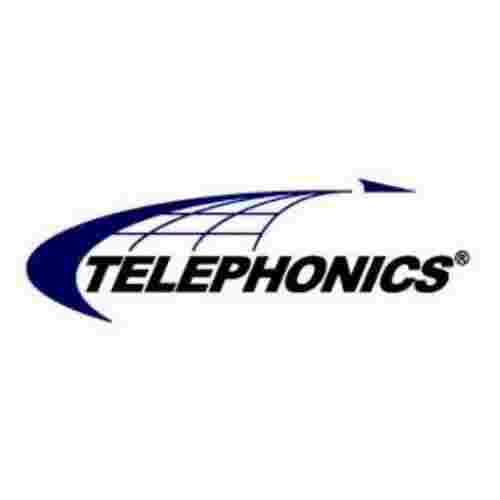Air Traffic Control Systems and Management (ATC) in USA in 2025
The United States boasts one of the busiest and most complex airspaces in the world. Keeping this aerial ballet in perfect harmony is the intricate web of Air Traffic Control Systems and Management (ATC). In 2024, the ATC landscape in the USA is undergoing a fascinating transformation, driven by a relentless pursuit of air traffic safety, efficiency, and sustainability.

Air Traffic Management (ATM) Systems
Imagine a grand orchestra, each instrument meticulously playing its part to create a unified melody. That’s akin to the symphony of ATM systems in the USA. Here are some key players:
- ATC Radar: The watchful eyes of the sky, these radars paint a real-time picture of aircraft positions, altitude, and direction. Think of them as the conductor, ensuring everyone stays in their designated lane.
- Voice Communication Switching Systems: The vital communication link between controllers and pilots. These systems ensure crystal-clear instructions and real-time updates, just like the conductor communicating with each section of the orchestra.
- Air Traffic Control Simulators: These high-tech training grounds replicate real-world scenarios, allowing aspiring air traffic controllers to hone their skills before taking the helm. Imagine them as the orchestra’s rehearsal space, where each musician practices their part before the grand performance.
- ATC Displays: The controller’s visual interface, displaying crucial information on aircraft positions, weather patterns, and airspace restrictions. Picture them as the sheet music for the controllers, providing them with the roadmap for guiding the aerial performance.
Air Traffic Control Automation is also playing an increasingly important role. Think of it as the automation software that helps the conductor balance the instruments and maintain a smooth tempo. For instance, systems like conflict detection and resolution tools assist controllers in identifying potential issues and taking corrective actions.
Air Traffic Controllers
While technology plays a crucial role, the human element remains irreplaceable. Air traffic controllers are the maestros of the skies, possessing exceptional decision-making skills, spatial awareness, and the ability to remain calm under pressure. The rigorous air traffic controller training program in the USA ensures these professionals are well-equipped to handle the complexities of modern air traffic.
ATC modernization efforts in the USA are not just about technology; they also focus on attracting and retaining top talent. This includes initiatives like:
- Improved working conditions: Addressing long hours and high-stress environments to foster a healthier work-life balance for controllers.
- Advanced training programs: Continuously updating training methods to keep controllers abreast of the latest technologies and procedures.
- Competitive salaries and benefits: Ensuring controllers are adequately compensated for their critical role.
Navigating Uncharted Skies
Air traffic congestion remains a significant challenge in the USA. As air travel continues to grow, especially in the air cargo industry, finding ways to optimize airspace usage and streamline traffic flow is critical. Here’s where some innovative solutions come into play:
- NextGen ATM (Next Generation Air Traffic Management): This ambitious initiative by the Federal Aviation Administration (FAA) aims to revolutionize ATC with technologies like satellite-based navigation and automated air traffic control systems. Imagine a more digital orchestra, where technology assists the conductor in managing the complexities of the performance.
- Trajectory-Based Operations (TBO): This approach focuses on predicting an aircraft’s entire flight path, allowing for more efficient routing and reduced delays. Think of it as the conductor pre-planning the musical piece, ensuring a smooth flow from beginning to end.
- Civil-Military ATM Integration: Optimizing airspace usage by streamlining coordination between civilian and military air traffic. This collaboration ensures both entities can operate safely and efficiently, like different sections of an orchestra working together to create a cohesive performance.
The future of ATC in the USA is also intertwined with the growing drone traffic. Developing safe and efficient drone traffic management systems will be crucial in integrating these unmanned aerial vehicles (UAVs) into the national airspace.
Sustainable aviation is another crucial consideration. ATC procedures are being optimized to reduce fuel consumption and emissions, contributing to a greener future for air travel. Imagine the orchestra minimizing its environmental impact while still delivering a powerful performance.
Price List
- System Complexity: ATC is a complex ecosystem with various components. The cost can vary significantly depending on the specific element being procured. For instance, a state-of-the-art ATC radar system will have a much higher price tag compared to an ATC display upgrade for a single tower.
- Customization and Integration: These systems are often customized to fit the specific needs of an airport or region. Integration costs with existing infrastructure also play a role in the final price.
- Procurement Process: ATC upgrades are typically handled by government agencies like the FAA through bidding processes. The final awarded contract price can vary depending on competition and negotiation.
However, to give you a general idea, here’s a breakdown of possible cost ranges for some ATC components:
- ATC Radar Systems: Millions to tens of millions of USD (depending on technology and range)
- Voice Communication Switching Systems: Hundreds of thousands to millions of USD
- Air Traffic Control Simulators: Millions of USD (depending on fidelity and complexity)
Soaring Towards a Brighter Future
The US ATC system is a marvel of innovation, constantly evolving to meet the demands of a dynamic and ever-growing air traffic landscape. From cutting-edge technologies to the dedication of air traffic controllers.
Get a Quote from Top 12 Global Leader Air Traffic Control Systems Manufacturers
FAQs
Is air travel safe in the USA in 2024?
Absolutely! The US ATC system prioritizes safety with advanced technologies and highly trained controllers. Modernization efforts like NextGen ATM are further enhancing safety and efficiency.
Why are there flight delays in the USA?
Air traffic congestion is a challenge, especially with growing air travel. The ATC system is constantly working on solutions like improved traffic flow management to minimize delays.
What jobs are available in US Air Traffic Control?
Air traffic controllers are the core, but there are also opportunities in system maintenance, engineering, and software development to support the ever-evolving ATC technology.











